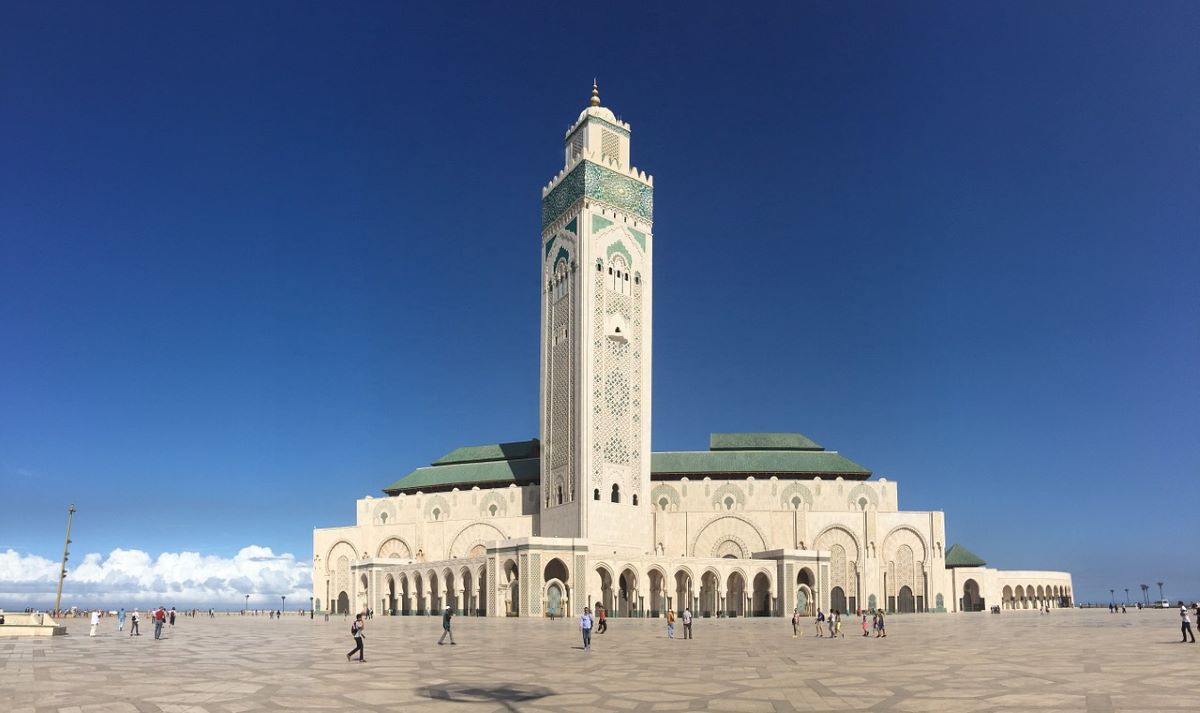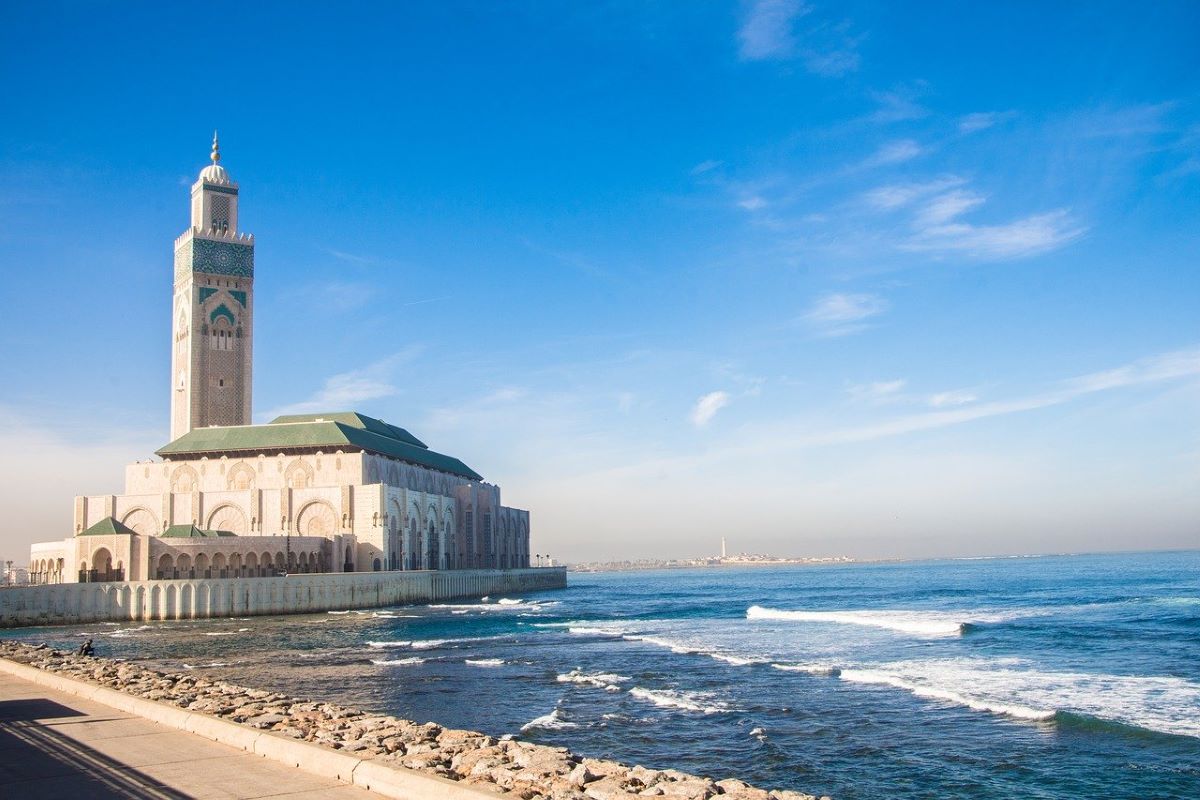
Image | Pixabay
Despite the fact that it is the largest city in Morocco, most travelers who visit Casablanca do so because they have programmed a route through the country that leads them there.
Although Rabat is the administrative capital, Casablanca is the headquarters of large international companies and the one that acts as a financial engine. This, together with its French colonial past, makes it a magnificent example to observe the contrast and mixture between the Western and Muslim world.
Whoever knows Casablanca by chance falls in love forever. What are the places that make this Moroccan city a charming place?
King Hassan II Mosque
It is the emblem of Casablanca and is considered the third largest in the world. It was built in honor of King Hassan II, who ruled Morocco between 1961 and 1999, to commemorate his 60th birthday.
This mosque is open to people of any religion and you can visit its interior by hiring the services of a guide. This temple has a capacity to accommodate 25.000 worshipers inside and about 80.000 in the outer courtyard.
The best Moroccan artisans of the XNUMXth century worked in the Hassan II Mosque in Casablanca. For its construction materials such as stone and wood carved by hand, marble and glass floors, ornate ceilings with gold sheets and ceramics covering the walls were used.
Its 210-meter-high minaret rises alongside the waters of the Atlantic and Muslims can pray while gazing at the beautiful waters of the ocean.
The Corniche

Image | Pixabay
And next to this temple is La Corniche. This district is the best place to see the beach in Casablanca. A quiet promenade where you can enjoy a quiet walk, the sun and the water. And it is that surfers from all over the world come to La Corniche beach to ride the waves of the Atlantic and have a drink with the sea in the background in any of the restaurants in the area.
Morocco Mall
Near the La Corniche area there is also the Morocco Mall. This shopping center is one of the largest and most luxurious in Morocco. It was designed by the Italian architect Davide Padoa, and has 250.000 m² of which 70.000 are dedicated exclusively to shops spread over three floors. In addition, it also has leisure areas, restaurants and large gardens.
In the area called the Souk, you can buy typical items from the Moroccan souks such as slippers, kaftans, djellaba, spices, oils, etc. Some wonderful souvenirs from Casablanca.
As for family entertainment, it has an Imax cinema, a large aquarium (Aquadream) and a small amusement park (Adventure Land), as well as the largest musical fountain in the world, which has more than a hundred color jets that they move to the beat of the music.
The Medina of Casablanca

Image | Pixabay
One of the most interesting places to see in Casablanca is its old medina. Despite not having that magical halo typical of other medieval Moroccan medinas, the network of narrow streets built during the XNUMXth century in Casablanca is worth a visit.
In the Medina of Casablanca, between squares and a mosque, we will find all kinds of cafes, restaurants and shops of clothing, footwear and decorative objects. A very special place to acquire a souvenir of the trip and to mix with the local people and observe their day to day.
Mohammed V Square and Royal Palace
Mohammed V Square in Casablanca is the administrative center of the city and one of the best works of the French urban architect Henri Prost, also in charge of the urban plan of Fez or Rabat. On the other hand, the Palace of Casablanca is also worth a visit, even if only from the outside since it cannot be accessed as it is one of the residences of the current Moroccan king.
The Jewish-Moroccan Museum
We are facing the only museum dedicated to Jewish culture in the Arab world, something surprising. This museum traces the 2.000-year history of Judaism in Morocco with a special focus on the Jewish community in Casablanca, which is where most of the country's Jews live. In it the visitor will find paintings, photographs, decorative elements, clothes and reproductions of the different Moroccan synagogues.